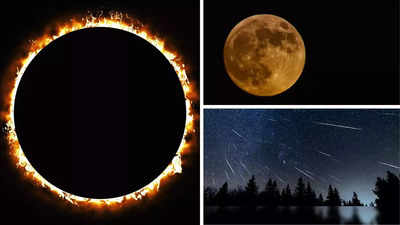Hunter’s Moon – the third in a series of four consecutive full moons of 2024 – will rise tonight in various parts of the world, including India. The celestial event will start at 8:40 pm IST on October 16, peaking on October 17 at 4:56 pm IST on October 17. This full moon is associated with planning, decisive action, and introspection.
If you’re looking to capture this celestial spectacle with your smartphone, here are ten tips to help you snap the perfect lunar image.
Location is the key
To capture the perfect moon shot, finding the right location is crucial. You must seek out an open area with minimal distractions and obstructions, such as a wide-open field or the rooftop of your building. This will ensure that the view of the moon is unobstructed and the surrounding darkness helps the moon stand out.
Stability is essential
Since the object is fire and you will be shooting in low-light conditions, clicking images without using a support can lead to blurry images. To avoid this, a tripod is your best friend as it can stabilise your smartphone, eliminate camera shake and ensure sharp, detailed photos of the moon.
Avoid the flash
Using flash while trying to capture the moon is counterproductive. The moon is too distant for your smartphone’s flash to have any effect, and it will only illuminate dust particles and other unwanted elements in the foreground, ruining the shot.
Focus is paramount
Another way to achieve a detailed moon photo is accurate focus. In dark conditions, the smartphone camera may struggle to lock onto the moon. To overcome this, manually tap and hold on the moon in your camera app’s viewfinder to ensure it remains in sharp focus.
HDR to save the day
If supported, enable your smartphone camera’s HDR (High Dynamic Range) mode as it will help capture a wider range of light and detail, improving the overall quality and colour accuracy of moon photos. Furthermore, to prevent blurry images caused by accidental shaking while pressing the shutter button, utilise your smartphone’s timer function or a remote shutter. A 10-second delay is ideal for moon photography.
Optical zoom is the way forward
While your phone may allow you to digitally zoom, optical zoom always retains the quality. Get closer to the moon for a more detailed shot. You can also consider using a third-party telephoto lens attachment.
Maximise resolution
Always shoot at your smartphone camera’s maximum resolution as this uses more pixels to capture data, providing a larger image with greater detail, which is beneficial for editing and producing high-quality prints.
Control the brightness
The moon can be surprisingly bright, potentially causing overexposure in photos. Manually reduce the exposure setting in your camera app to capture more detail and reveal the moon’s textures.
Edit subtly to retain originality
Use a photo editor to fine-tune moon photos. Subtle adjustments to exposure, highlights, shadows, and sharpness can enhance the image.
Capture a timelapse
Experiment with your smartphone’s timelapse feature to capture the moon’s journey across the sky. This can create mesmerising videos showcasing the moon’s phases and movement.
